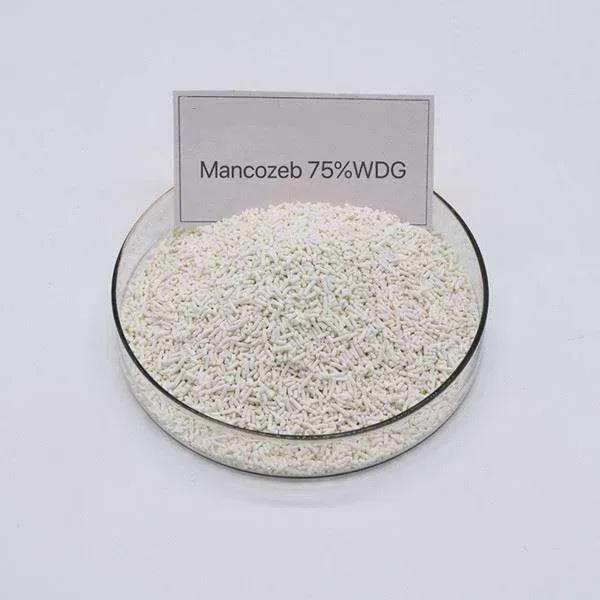


Using Mancozeb in Forestry: A Powerful Solution for Disease Control
Forestry management requires effective disease control strategies to protect trees from fungal infections that can damage entire ecosystems. Mancozeb and copper fungicide combinations are widely used in forestry to safeguard trees from various fungal pathogens. As a mancozeb-based fungicide, it provides broad-spectrum protection, making it a preferred choice for foresters and plant health specialists. Whether used alone or in combination with mancozeb copper sulphate 47.15, this mancozeb contact fungicide plays a crucial role in maintaining forest health.

How Mancozeb and Copper Fungicide Protects Trees
Forests are constantly exposed to fungal pathogens that thrive in humid conditions. Mancozeb and copper fungicide create a protective barrier on tree surfaces, preventing fungal spores from germinating. Unlike systemic fungicides, mancozeb contact fungicide remains on the surface, providing consistent protection without being absorbed into plant tissues.
The combination of mancozeb and copper fungicide offers dual benefits. While mancozeb-based fungicide disrupts fungal enzyme activity, copper compounds enhance antifungal properties, increasing effectiveness. This makes the formulation ideal for controlling diseases such as leaf spot, anthracnose, and rust that commonly affect forest trees.
Why Mancozeb-Based Fungicide Is Essential in Forestry
The use of mancozeb-based fungicide in forestry is essential due to its broad-spectrum activity and preventative action. Trees in forests are highly susceptible to fungal infections, especially in regions with high humidity and frequent rainfall. If left untreated, these infections can lead to tree mortality and disrupt entire ecosystems.
One of the advantages of mancozeb-based fungicide is its low risk of resistance development. Since it acts on multiple fungal enzymes, fungi find it difficult to develop resistance. This ensures long-term effectiveness in disease prevention, making it a reliable option for foresters managing large forested areas.
The Effectiveness of Mancozeb Contact Fungicide in Disease Management
The non-systemic nature of mancozeb contact fungicide means that it does not penetrate plant tissues but instead forms a protective layer on leaves, stems, and bark. This characteristic makes it highly effective when applied before fungal spores start developing. Regular applications at the right intervals help maintain protection throughout the growing season.
To achieve the best results, mancozeb contact fungicide should be applied during early disease development stages. It is particularly useful for protecting tree nurseries and young saplings, which are more vulnerable to fungal infections. Since it remains on the surface, reapplication is necessary after heavy rains to ensure continuous protection.
Mancozeb Copper Sulphate 47.15 for Enhanced Protection
For more potent disease control, many foresters use mancozeb copper sulphate 47.15, a combination that provides additional protection against fungal infections. Copper compounds in this formulation boost fungicidal activity by disrupting fungal cell membranes, making it even more effective in high-risk areas.
This formulation is widely used for controlling blights, mildew, and bacterial infections in forests. The presence of copper also offers a secondary benefit—it promotes plant resistance by strengthening cell walls. Mancozeb copper sulphate 47.15 is especially useful in forestry applications where trees are exposed to prolonged moisture, a key factor in fungal disease development.
For those looking for high-quality mancozeb and copper fungicide, our website offers premium options to help manage forestry diseases effectively. Invest in reliable mancozeb-based fungicide solutions to ensure long-term forest health and sustainability.
Mancozeb and Copper Fungicide FAQs
How often should mancozeb contact fungicide be applied in forestry?
The frequency of application depends on weather conditions and disease pressure. Typically, mancozeb contact fungicide should be applied every 10–14 days, with more frequent applications needed during high humidity periods.
Can mancozeb-based fungicide be mixed with other forestry treatments?
Yes, mancozeb-based fungicide is often compatible with other forestry treatments, including insecticides and growth regulators. However, always conduct a compatibility test before mixing.
Is mancozeb copper sulphate 47.15 safe for long-term use in forests?
When used according to recommended guidelines, mancozeb copper sulphate 47.15 is safe and effective for forestry applications. It does not cause long-term soil buildup and is biodegradable over time.
What fungal diseases can mancozeb and copper fungicide prevent?
Mancozeb and copper fungicide help prevent leaf spot, anthracnose, rust, and blights that commonly affect forest trees. The dual-action formula provides a strong defense against fungal pathogens.
Where can I buy high-quality mancozeb and copper fungicide for forestry?
You can find top-grade mancozeb and copper fungicide, including mancozeb-based fungicide and mancozeb copper sulphate 47.15, on our website, offering reliable solutions for effective forestry disease control.
-
Uncover the Benefits of Sodium ChlorateNewsJun.24,2025
-
Sodium for Sale: Your Essential ResourceNewsJun.24,2025
-
Raw Materials in Chemical IndustryNewsJun.24,2025
-
Potassium Hydroxide: Versatile Solutions for Your NeedsNewsJun.24,2025
-
Organic Pesticides and Chemical Raw Materials: Building a Sustainable FutureNewsJun.24,2025
-
Discover Premium Chlorine Tablets TodayNewsJun.24,2025
-
Zinc for Sale: Your Essential ResourceNewsJun.04,2025


















